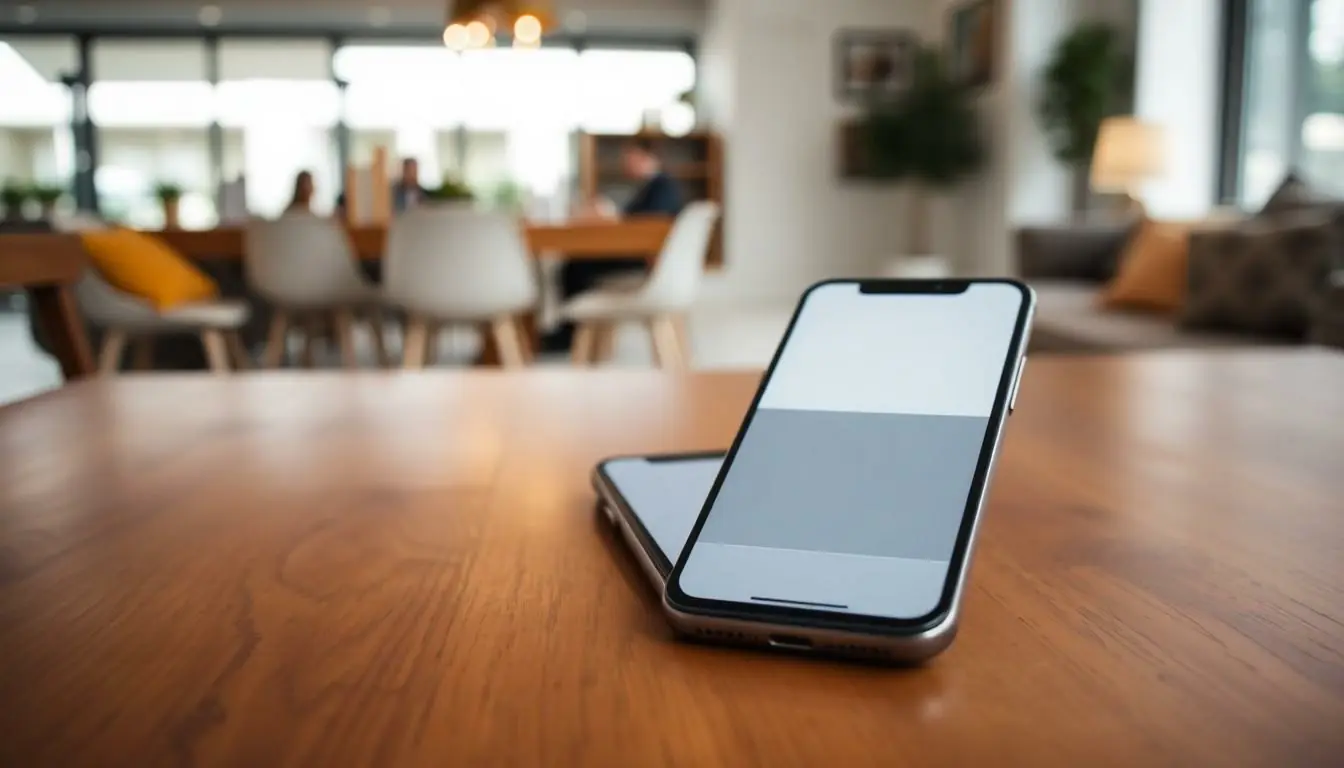Is that pesky grey bar at the bottom of the iPhone home screen driving you up the wall? You’re not alone. Many users find themselves staring at this uninvited guest, wondering if it’s a permanent fixture or just a cruel joke from Apple. Fear not! This guide is here to rescue you from the clutches of that dull grey abyss.
Table of Contents
ToggleUnderstanding the Grey Bar
The grey bar at the bottom of the iPhone home screen presents a common challenge for users. This section details its characteristics and reasons for its presence.
What Is the Grey Bar?
The grey bar serves as a visual element located at the bottom of the iPhone home screen. Users may notice it extends across the width of the display, creating a distinct area separate from app icons. This feature can affect the overall aesthetic and functionality of the interface. Many users find it distracting, especially when navigating through apps or folders.
Why It Appears on Your iPhone
Several factors contribute to the appearance of the grey bar on an iPhone. An unfinished app update or a malfunctioning setting may trigger this visual disturbance. Accessibility features, including VoiceOver or Switch Control, might also activate the grey bar. In some cases, the grey bar results from software bugs or outdated iOS versions. Users encountering persistent issues typically find it helpful to troubleshoot various settings or consider updating their device’s software.
Methods to Remove the Grey Bar
Numerous methods exist for removing the grey bar at the bottom of the iPhone home screen. Users can follow these techniques to restore normal functionality.
Restarting Your iPhone
Restarting the iPhone often resolves minor software glitches. To restart, press and hold the side button and either volume button until the slider appears. Drag the slider to power off the device. Wait for at least 30 seconds before turning it back on by pressing the side button. Upon restart, check if the grey bar still appears.
Updating iOS
Updating iOS addresses potential bugs linked to the grey bar issue. Navigate to Settings, then tap General, and select Software Update. If an update is available, download and install it. Ensure the iPhone has sufficient battery life or is connected to power during the update process. This step often improves overall device stability and performance.
Adjusting Display Settings
Adjusting display settings can help eliminate the grey bar. Navigate to Settings, then tap Accessibility, followed by Display & Text Size. Disable features like VoiceOver or Switch Control if enabled. Additionally, consider resetting display settings to default. This may resolve conflicts that contribute to the grey bar display.
Advanced Solutions
For persistent grey bars, advanced solutions might prove effective. Users can explore resetting all settings or employing AssistiveTouch to regain a full-screen experience.
Resetting All Settings
Resetting all settings may restore normal functionality. Navigate to Settings, select General, then tap Reset. Choose Reset All Settings, which doesn’t erase data but reconfigures preferences to factory defaults. Wi-Fi passwords, wallpaper settings, and other customizations may vanish, necessitating re-entry. After resetting, users should check if the grey bar persists. It’s an effective method for troubleshooting various glitches and restoring device performance.
Using AssistiveTouch
Using AssistiveTouch might provide a workaround for the grey bar issue. Users can enable this feature by going to Settings, then Accessibility, and tapping Touch. From there, they can select AssistiveTouch to enable it. This option creates a virtual button that can help manage screen functions easily. Users can drag the AssistiveTouch menu to an area of the screen that minimizes the distraction of the grey bar. If the grey bar continues to disrupt, further adjustments within the AssistiveTouch menu may be necessary.
Additional Tips
Understanding how to manage the grey bar will enhance the user experience on an iPhone. Implementing preventive measures can effectively minimize its recurrence.
How to Prevent the Grey Bar from Reappearing
Regularly updating the iOS can prevent bugs that often trigger the grey bar. Users should navigate to Settings, select General, and choose Software Update frequently. Disabling accessibility features not in use also helps. Users can access Accessibility settings and turn off VoiceOver or Switch Control. Maintaining a clean home screen without excessive apps or widgets reduces the likelihood of display issues. Keeping the device free from glitches through periodic restarts is another effective practice. Configuring notifications and background app refresh can also contribute to smoother performance.
When to Seek Professional Help
Seeking professional help may become necessary if the grey bar persists after trying basic troubleshooting. Users should consider visiting an Apple Store or authorized service provider if the software updates and resets do not resolve the issue. Persistent hardware-related problems can lead to unexpected display issues. A professional can diagnose underlying causes, ensuring the device functions optimally. Users should document all troubleshooting steps taken before the visit, as this information assists technicians in their diagnosis.
Conclusion
Addressing the grey bar at the bottom of the iPhone home screen can significantly enhance the user experience. By following the outlined methods users can effectively troubleshoot and resolve this common issue. Regularly updating iOS and managing accessibility features play a crucial role in maintaining a clean interface.
For those still facing challenges after trying these solutions seeking professional assistance is a smart step. Documenting all troubleshooting efforts can help technicians diagnose the problem more efficiently. With the right approach users can enjoy a distraction-free home screen and make the most of their iPhone experience.




